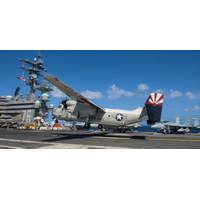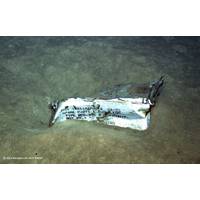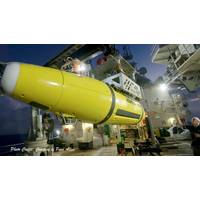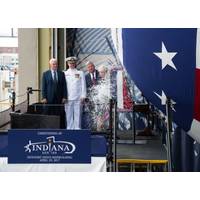
Future USS South Dakota Delivered to US Navy
built under the limitations of the Washington Naval treaty. South Dakota served in the Pacific and Atlantic as a carrier escort and patrolled the North Atlantic with the British navy. During the ship's second tour in the Pacific, it helped to cripple the Japanese navy during the Battle of the Philippine Sea before helping to bombard shore defenses at Okinawa and preparing for an eventual invasion of the Japanese home islands.Virginia-class submarines are built to operate in the world's littoral and deep waters while conducting anti-submarine warfare; anti-surface ship warfare; strike warfare

US Navy to Survey Downed Aircraft in the Philippine Sea
The U.S. Navy said it has contracted a research vessel owned by Microsoft co-founder Paul G. Allen to survey the location of a downed C-2A Greyhound plane before attempts are made to recover the aircraft from 18,500 feet below the surface in the Philippine Sea. The C-2A Greyhound was transporting 11 crew and passengers when it crashed into the ocean on November 22, 2017, killing three. On December 29, A Navy team using a towed pinger locator (TPL-25) system discovered the aircraft resting on the seafloor at a depth of 18,500 feet, an unprecedented depth for the salvage of an aircraft.

Downed US Navy Aircraft Found in Philippine Sea
A U.S. Navy team has located a C-2A Greyhound aircraft that crashed in the Philippine Sea on November 22. The downed aircraft rests at a depth of about 18,500 feet, making the salvage operation the deepest recovery attempt of an aircraft to date, the Navy said, adding it will make every effort will be made to recover the aircraft and fallen Sailors, despite very challenging conditions. Eight of the 11 crew and passengers on board were recovered immediately following the crash. For the next three days, the U.S. Navy led combined search and rescue for the three missing Sailors with the

The Quest to Find and Explore USS Indianapolis
Sunk by Japanese torpedoes near the end of World War II, heavy cruiser USS Indianapolis disappeared to the darkest depths of the Philippine Sea, where it remained undiscovered for more than 70 years. Recently a team of civilian researchers led by Microsoft co-founder Paul G. Allen set out equipped with an arsenal of high-tech search equipment on a mission to locate the historic vessel last seen on July 30, 1945. The story of the USS Indianapolis is one of military might, heroism, tragedy, controversy and mystery. Built by New York Shipbuilding Corporation in Camden, N.J., the 623-ft., 9

The ROV that Explored USS Indianapolis
The wreckage of the USS Indianapolis was found by Microsoft co-founder and philanthropist Paul G. Allen and his team on August 19, 2017. A state-of-the-art remotely operated vehicle (ROV) was deployed to confirm and document the shipwreck in its resting place some 5,500 meters below the surface in the Philippine Sea. For the design, manufacture and commissioning of the specialty ROV, Allen and his company Vulcan Inc. received support from 3U Technologies, LLC, who said it was initially contracted by Vulcan in 2012 to investigate 6,000-meter ROV solutions to extend Allen’s passion for WWII

The AUV That Helped Find USS Indianapolis
by Kongsberg Maritime subsidiary Hydroid Inc., which gathered the sonar data that helped locate the USS Indianapolis, 72 years after it was torpedoed and sunk by the Japanese Navy near the end of World War II. The wreckage was found on August 19, sitting 5,500 meters below the surface in the Philippine Sea. “We are honored to have had our REMUS 6000 be part of such a monumental discovery,” said Duane Fotheringham, president of Hydroid. “Paul Allen and his team have given the gift of solace to the survivors and the families of the brave men that lost their lives protecting

EdgeTech Sonar Utilized in USS Indianapolis Discovery
Manufacturer of high resolution sonar imaging systems and underwater technology EdgeTech said its AUV-based side scan sonar system played a key role in the recent discovery of the USS Indianapolis wreckage 5,500 meters deep in the Philippine Sea. The sinking of the USS Indianapolis had the greatest loss of life from a single ship in the history of the U.S. Navy. The EdgeTech 2205 AUV-based sonar system is one of the many advanced underwater technology systems on-board the RV Petrel which discovered the wreckage recently. The system is integrated into a deep water autonomous underwater vehicle

US Navy Christens Submarine Indiana
in the North Atlantic and later participated in the blockade of Santiago de Cuba during the Spanish-American War. The second Indiana (BB-58) was a South Dakota-class battleship that earned nine battle stars for her service in the Pacific Theater in World War II. BB-58 fought in the Battle of the Philippine Sea and participated in the invasions of Tarawa, Kwajalein and Okinawa, and bombarded Saipan, the Palau Islands, the Philippines and Iwo Jima. Indiana will have the capability to attack targets ashore with highly accurate Tomahawk cruise missiles and conduct covert long-term surveillance
US Navy to Christen Submarine Indiana
Atlantic and later participated in the blockade of Santiago de Cuba during the Spanish-American War. The second Indiana (BB-58) was a South Dakota-class battleship that earned nine battle stars for her service in the Pacific Theater in World War II. BB-58 fought in the Battle of the Philippine Sea and participated in the invasions of Tarawa, Kwajalein and Okinawa, and bombarded Saipan, the Palau Islands, the Philippines and Iwo Jima. Indiana will have the capability to attack targets ashore with highly accurate Tomahawk cruise missiles and conduct covert long-term surveillance
 December 2025
December 2025





